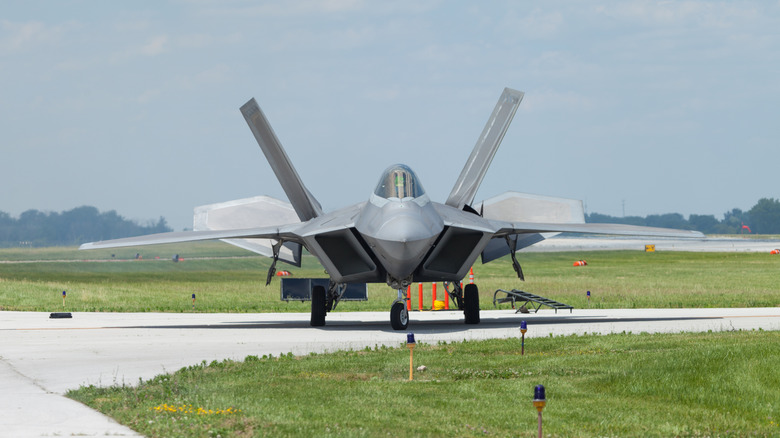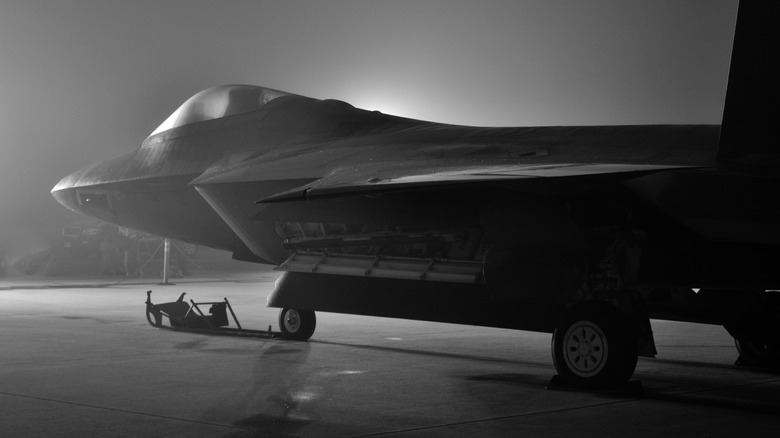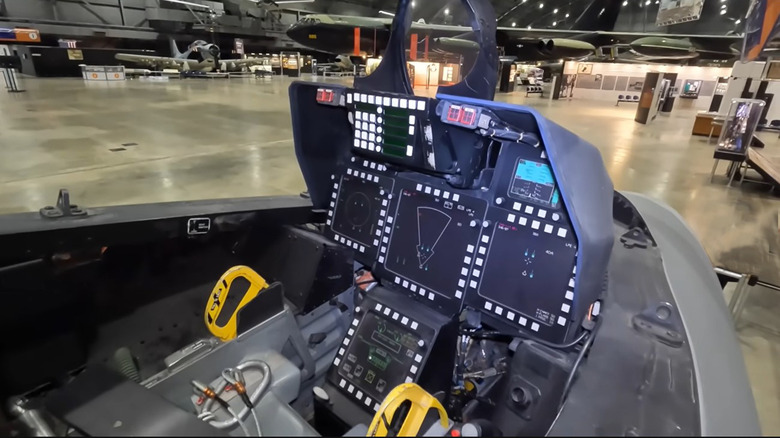Here's What The F-22 Raptor's Cockpit Really Looks Like
The F-22 Raptor is built by Lockheed Martin and is one of the most advanced fighter jets on the planet. However, it's easy to forget that this plane is nearly 30 years old with the first F-22 Raptor taking to the air on September 7, 1997. This maiden flight of the first F-22 — known as Raptor 4001 — signified the dawn of a new generation of maneuverable and stealthy jet fighters. The program was canceled in 2008 as a result of the changing political landscape, culminating in the collapse of the Soviet Union. By this point, there had been 195 of the planes built, of which 187 were destined to enter service.
However, despite its age, much of the technology used in the plane remains a highly guarded secret, including the cockpit's interior. Only recently have we begun to get some idea of what the F-22's cockpit really looks like.
For F-22 pilots, the cockpit of the jet will look like just another day in the office. For the rest of us mere mortals, it's a place of high-tech wizardry hidden behind a veil of secrecy. Let's see if we can lift that veil a little and have a peek inside the cockpit of an F-22 Raptor.
Inside an F-22 cockpit
The detail of the cockpit that's immediately striking isn't the inner workings but rather the F-22 Raptor's gold canopy. This is part of the plane's fifth-generation stealth package as the shape and materials used in the canopy are designed to scatter radar waves. It's the largest piece of high-quality (Zone 1) polycarbonate in the world and the first canopy compatible with night-vision goggles. Once you step inside the cockpit, the first thing you'll notice is a lack of dials.
The F-22 Raptor is one of the first fighters to use an all-glass cockpit, meaning it uses all digital displays. One of the most prominent of these is the heads-up display (HUD), the primary flight instrument for the pilot, which can be configured to fit their preferences. Slotted in below the HUD is the primary control panel. This is a keypad entry system for navigation and communication purposes. Below this, there are six LCD panels that serve a variety of functions including Integrated Caution/Advisory/Warning data (ICAW), a primary multi-function screen, and even that all-important fuel gauge.
The ultimate aim of the design is to reduce the pilot workload during operations. This is the role that the ICAW is central to, building on the success of a similar system in the army's RAH-66 Comanche helicopters. This system is designed to filter out unnecessary situational information that can overwhelm pilots in high-stress situations.
The F-22's flight controls and ejection system
The F-22's cockpit doesn't just look high-tech — it's designed for maximum pilot efficiency and survivability. Like most modern fighters, the Raptor uses a Hands-on Throttle and Stick (HOTAS) control system. Similar to the F-16 Falcon, the F-22's throttle is on the pilot's left while the control stick is positioned on the right, allowing the pilot to fly the aircraft without taking their eyes off the surroundings or the HUD. The control stick is a pressure-sensitive device with a throw of about a quarter inch. This allows pilots to maneuver the fighter with incredibly slight movements.
For most of us leaving work early is a thing of joy. However, a pilot rocketing through the sky at Mach 1.5, having to leave work early can only mean something's gone catastrophically wrong. While this is a situation that a pilot will hopefully never have to face, flying jet fighters is a dangerous business and when things do go wrong they need a proven escape system.
This is where the ACES II military jet ejection seat comes into the picture. While this isn't unique to the F-22 — there are 6,000 of these seats in service and have already saved 713 lives — it remains a vital part of the Raptor's cockpit by protecting the fearless pilots who put everything on the line each time they take to the skies.


